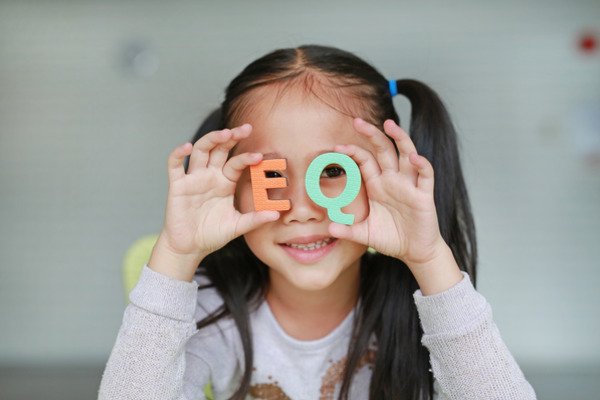What is active listening and why is it so important? Active listening can help us improve the relationships we have with others. Discover what it is and how to practice it.

The active listening It is a way of relating to other people to interact in a responsible and healthy way. It’s about paying attention to what the other person says with full consciousness, not only consists of listening to what he tells us but also maintaining the best concentration on what he is explaining to us. Active listening is very useful to reduce conflicts (whether work or personal), improve our life as a couple and develop much richer and healthier social relationships.
Test on active listening
You know how to do it? Take the test and find out the answer:
What is active listening? Definition
The active listening and its definition refers to the listening patterns that people have with which a receiver (the person who is listening) remains engaged with their interlocutor in a positive way. Therefore, it is an active communication in which the receiver listens attentively while the other person speaks, all without passing judgment towards the other. When we practice these types of listening, the person who has spoken feels more valued and grateful.
As you can understand, there are many benefits of active listening. Although it may seem simple, to practice it you need to have a lot of empathy and high understanding skills. Know how to listen to sentences actively It requires forgetting about yourself and focusing on the person in front of you, from the words they use, how they say them and even their non-verbal communication. Furthermore, it is essential to show interest, not judge the other person and show that the message is reaching us correctly.
There are studies, such as the one conducted by Dr. Johannes Zimmerman on interpersonal problems, that even affirm that active listening It helps reduce emotional conflicts associated with disorders such as depression and anxiety, since in the face of the “I” and the individualism of the society in which we live, it focuses on “we”, which helps to establish healthy social limits. and stable mental health. This specialist points out that while the individualism that comes with constantly using the “I” isolates us, as it differentiates us as a different social entity, continually using the “we” makes us feel part of society, makes us participants in relationships. with the rest. And this contributes to reducing problems such as depression and anxiety.
What is active listening?
As we have mentioned, to be a person who actively listens We should not only focus on listening while someone else speaks. When practicing active listening you must focus on what others are telling you. In this way, active communication involves activating all our senses and paying attention beyond words. Therefore, active listening or listening to others actively consists of the following.
- Be neutral and have no prejudices: A synonymous with active listening It is precisely not to pass judgment on others. Sometimes, not everything is what it seems at first glance, so we must listen carefully to the explanation in a neutral way.
- Practice patience (don’t fill silent periods): Patience goes hand in hand with active communication A person who listens actively is able to leave space for silence so that the interlocutor can clarify his or her ideas.
- Verbal and non-verbal feedback to show signs of attentive listening: Our body language is also part of the conversations we have with others. Therefore a listen carefully It will also involve knowing how to read these types of messages through expressions and the body.
- Ask questions: Questions are inevitable if you want actively listen to others In this case, it is about trying to complement the information that the other person has given us.
- Ask for clarification: When we ask for an explanation this is not synonymous with carrying out an selective listening This is a clear sign that we want to understand the other.
- Resume: By summarizing what others say we avoid passive listening The reason is that to know what is important we need to be focused on what others tell us.
Examples of active listening dialogues
It is normal that for leave behind passive listening, we need examples of active listening dialogues. A good example of a person actively listening is the following:
X: I’m sorry to tell you this, but yesterday I had a fight with my brother and we haven’t spoken since. Now I feel bad and I don’t know who I can talk to.
Y: You can count on me. Tell me, what happened?
X: We were talking about what we could do for our parents’ wedding anniversary, but there was a little conflict.
Y: But, what caused this conflict?
X: My sister assumed that I would help her with the preparation, but I don’t have any time because we are in a difficult situation at my work. When I told her that she couldn’t help her, she started to blame me for never helping her.
Y: Wow, I’m sorry this happened. How did that make you feel?
X: Frustrated, angry and disappointed. Even so, I think I should tell you again that I still want to help in any way I can.
Y: It’s a difficult situation. I think maybe you need some time to talk to her again.
X: Yes, I suppose so. Thanks for listening, I just needed to vent.
Benefits of active listening
It is evident that when two people have a conversation but do not listen deeply to each other, the dialogue ends up failing. This effect is much more prominent when it comes to an argument. In these cases, the Italian psychologist Simona Lauri is clear about avoiding selective listening or passive listening In favor of active listening it has its benefits:
“Active listening reduces the tension that occurs in a discussion and improves dialogue, which contributes to having a better relationship with others.”
To illustrate this, the professional gives a clear example: when we argue, most of us tend to interrupt the other person. Instead of focusing on listening carefully to what he tells us, we start thinking about everything we want to say to invalidate his arguments and reaffirm our position. Therefore, we think only of ourselves, not of what the other person needs. With this we achieve is to increase the tension even more. To reduce conflict, we need to listen to what the other party has to say and assess what truth there is in what they say.
- Bring people closer together: The “we” is an important element. We have to stop thinking about what we want to say and focus on what the other person is saying to improve our relationships and, in the long run, our emotional stability.
- More effective in resolving conflicts: The active listening It serves to solve relationship, work, family and personal problems. Learning to listen carefully to others is essential to enjoy a full and healthy social life. In fact, it is a basic element in communication, since it is necessary to pay attention to what the other person says to propose a negotiation. But it also improves our empathy, helps us understand other points of view, know the needs of others and express ourselves with greater confidence.
- You change perspective: Sometimes seeing things from another perspective can be very beneficial for our mental health. Thanks to changing our passive listening for listen more carefully people can see situations with more distance and without being influenced by emotions.
- Helps people: Listen and actively listen It makes people able to help their interlocutors. As we have seen in the examples of active listening, people feel more comforted when someone listens to them without the intention of judging or questioning their dialogue.
- Improve your relationships: Thanks to the active listening People improve their relationships with others. The reason for this is that everyone benefits from someone actively listening to them, as it makes the interlocutors clarify their ideas.
As we see, there are many benefits to actively listen to others For this reason, it is essential, especially when we have relationship problems, to learn to do active listening.

Active listening techniques
The active listening It is not just a verbal expression, but you also have to work on non-verbal communication, that is, gestures and looks. In order to communicate safely it is necessary that we learn to change some behaviors. Let’s see which ones.
1. Give importance to the other person
In order for the person with whom we are arguing to feel that we are actively listening, we need to focus on them, working on our gaze, non-verbal communication and our body’s response. To do this, you must follow several keys:
- Looking into the eyes is active and attentive listening signal
- Nod while the other person tells us their differences to let them know that you like them. we are listening
- Repeat what you just said to confirm that we are hanging on every word.
- Ask interesting questions to delve deeper into the communication
- show a face attentive and relaxed
- Offer a body posture of interest and slightly inclined forward.
- Avoid interrupting at all costs to the speaker and make a tired or angry face when we interact.
- Don’t get distracted during the conversation or take it into our territory by talking about oneself.
2. Avoid making value judgments and giving opinions
We should not question what the other person is telling us, nor give advice as if what we were proposing was the supreme truth or the solution to the problem. To reduce conflict with active listening and to reach an understanding it is necessary to validate what he says and try to understand his problem without criticizing him.
3. Respect their time and feelings
We should not try to pressure her to tell us something she does not want, or make her see that what she tells us is a trifle. Quite the opposite: we must show empathy understand what they feel and how they feel, giving them the importance that that person gives them and allowing them time to express themselves and assimilate it.
4. Show interest and ask questions
Questions are essential to practice a good active listening Thanks to them you will be able to clarify what you have not understood well. Additionally, you can always ask open-ended questions to encourage the interlocutor to tell more about what worries them.
5. Observe non-verbal language
In order to understand the person in front of you, you must also pay attention to what they say through their body language. In many cases, this allows us to understand more effectively what is being conveyed to us.
6. Let go of your internal dialogue
Internal dialogue can make our active listening become a selective listening When someone talks to you about their problems or conflicts, it is important to put aside any fantasies or thoughts that are unrelated to the conversation.
7. Don’t change the subject
On many occasions, people tend to change the subject to exemplify a situation similar to what has happened to them.










